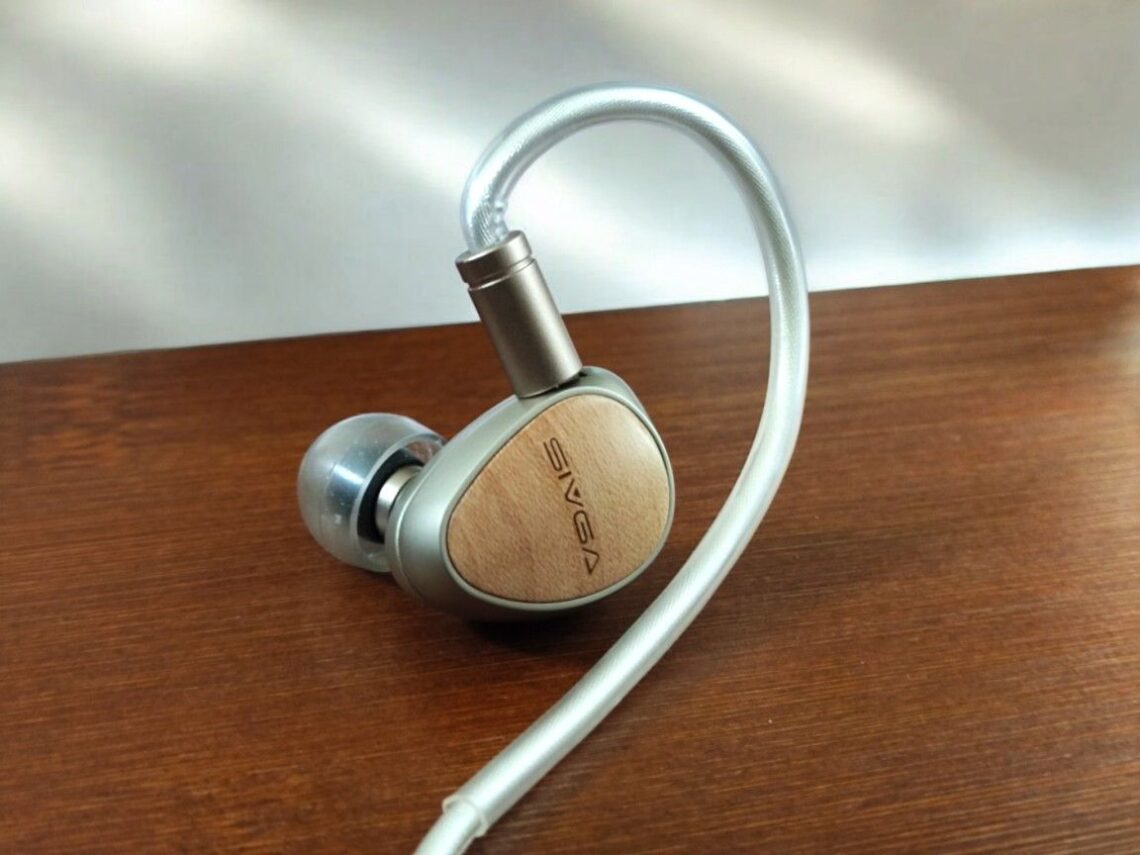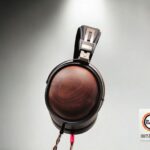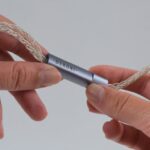Established in 2016, Sivga is an ambitious Chinese company specializing in the design and manufacture of headphones and earphones. They are especially known for their range of wooden full-size headphones, but they also make in-ear monitors (IEMs) and earbuds, both wired and wireless. Sivga is also the company behind the brand Sendy Audio.
The dynamic single-driver Sivga Que is the most affordable of Sivga’s current lineup of IEMs. The other two are the planar magnetic Nightingale and the all wooden-housing, dual-driver SW001R.
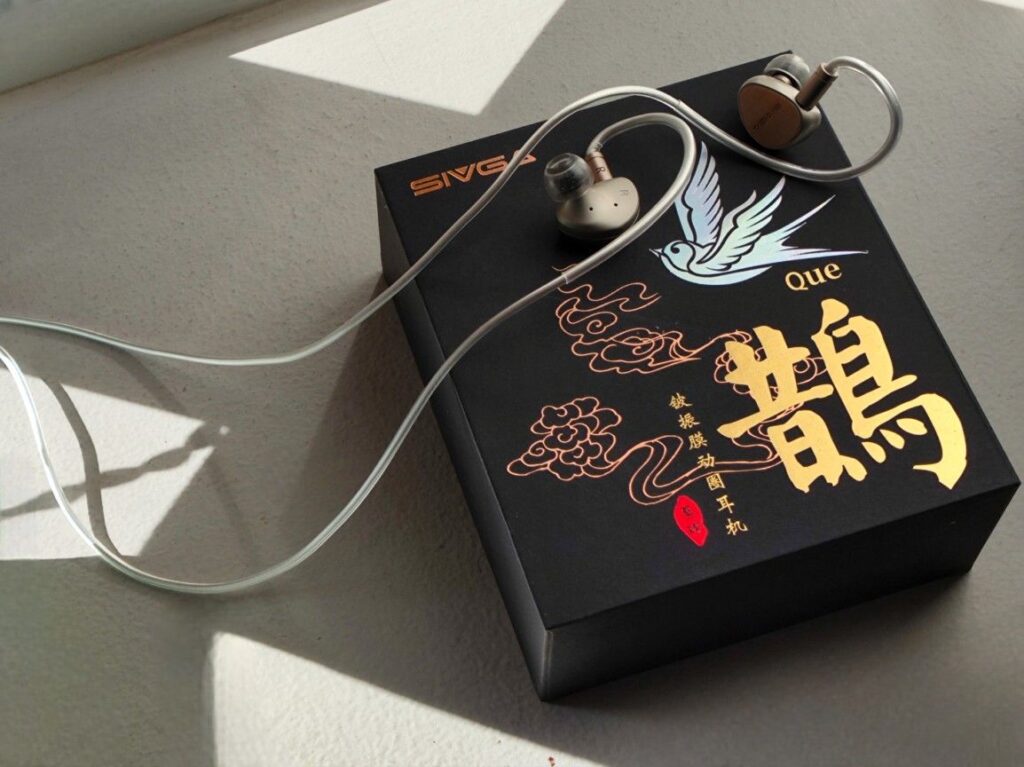
Image Copyright: The Headphoneer
SIVGA QUE – MAIN TAKEAWAY
- Warm and lush sound
- Smooth yet detailed
- Never harsh
- Excellent build quality
- High quality cable
- Easy to drive
The Sivga Que’s 10mm dynamic driver features a single-magnet dual-cavity driver design and a beryllium-plated diaphragm. Beryllium offers high rigidity and light weight, which, in addition to durability, are the two most important aspects of a diaphragm. Beryllium is used in Focal’s high-end Utopia headphones. These days, it is not unusual to have beryllium-plated diaphragms in IEMs, while pure beryllium drivers remain a novelty, only found in a few, typically expensive products.
The housing of the Sivga Que is made of a zinc alloy using a precise die-casting process and is designed to optimize diaphragm movement, reduce resonance, and extend the driver’s lifespan.
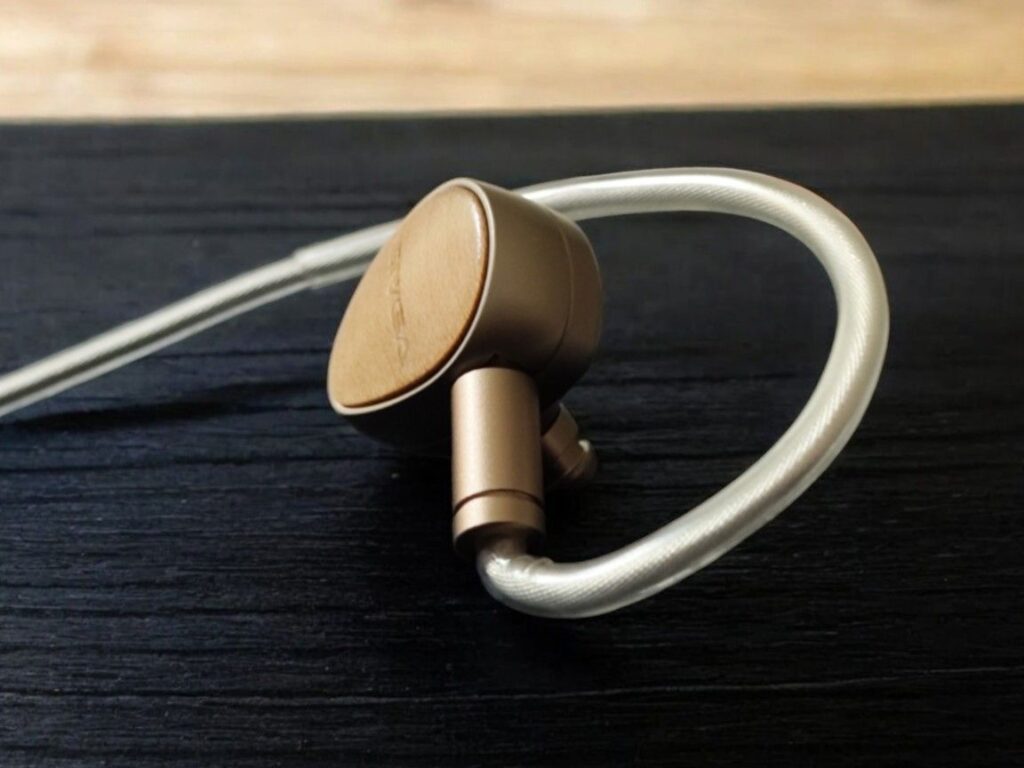
Image Copyright: The Headphoneer
What appears to be a faceplate is actually the rear chamber panel, made from North American white maple wood. Not only does it look good, but like wooden cups on headphones, a wooden rear chamber will affect the resonances and sound in a more active way than most other materials.
SIVGA QUE SPECIFICATIONS
- Driver design: 10mm single-magnet dual-cavity
- Driver diaphragm: beryllium coated
- Impedance: 32Ω +/-15%
- Sensitivity: 108 +/-3 dB
- Frequency response: 20-20KHZ
- Housing Material: Zinc alloy and maple wood
- Cable: high-purity oxygen-free copper with silver plating
- Cable Length: ca. 1.25m
- IEM connector: 0.78mm 2-pin
- Termination plug: 3.5mm single-ended
- Weight: 10g per earphone without cable
Reviewed at 69 USD.
Check the current price here:
Disclaimer: The review unit was provided by Sivga for this review, with no strings attached. We write for the readers, and the opinions and observations expressed in this article are entirely the reviewer’s own.
We use affiliate links to generate income, but the commission is earned regardless of what product is purchased through the links.
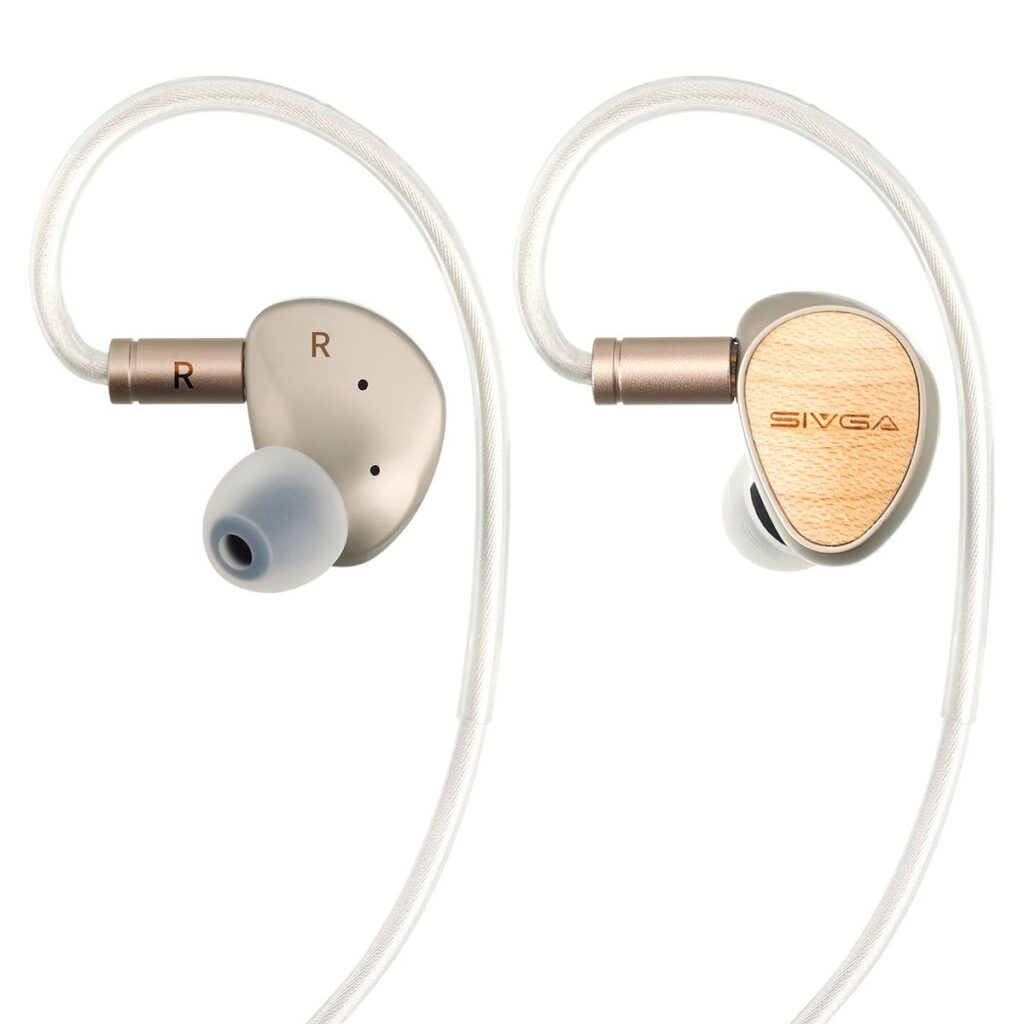
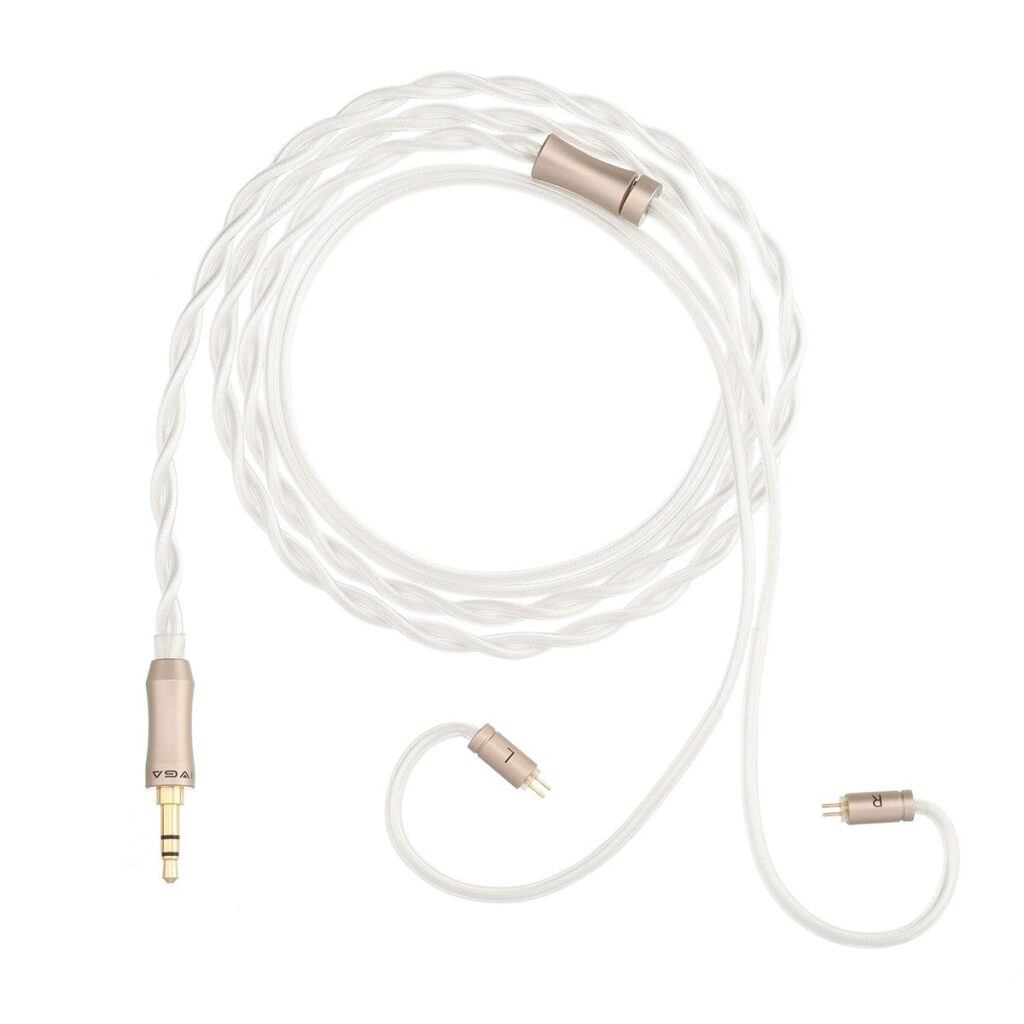
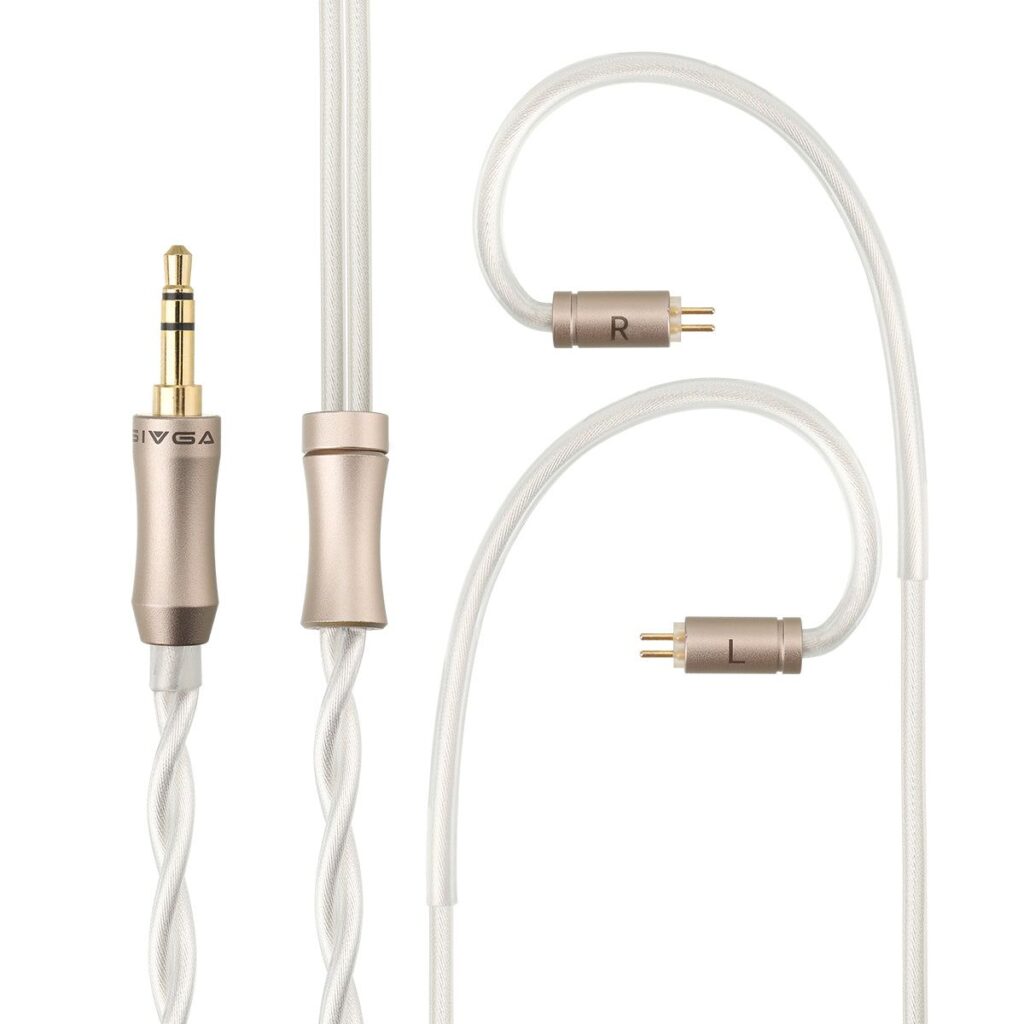
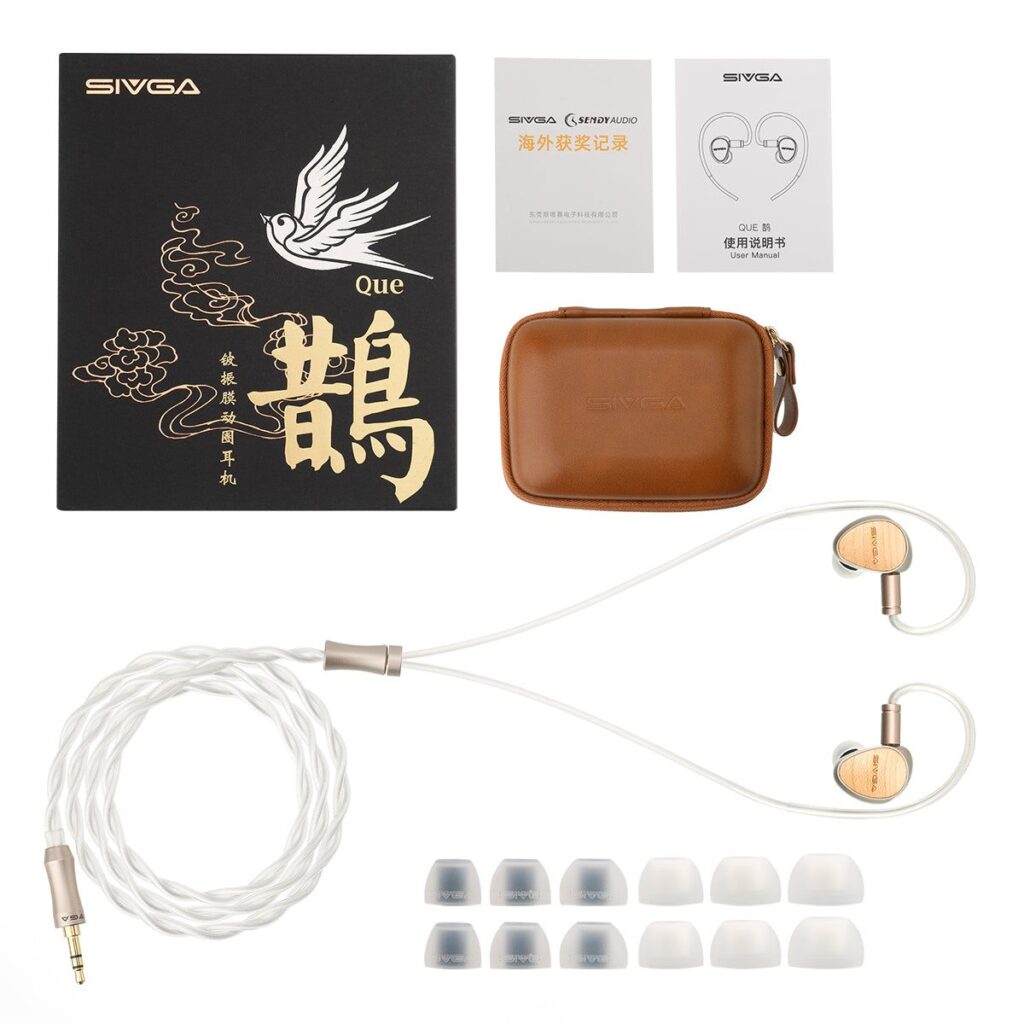
Great craftsmanship and premium accessories
BUILD AND COMFORT
The Sivga Que feels and looks like a premium product. The metal and maple housing is really nice. It has a rounded design that fits nicely in the ear. There are two small went holes on the inside of the housing.
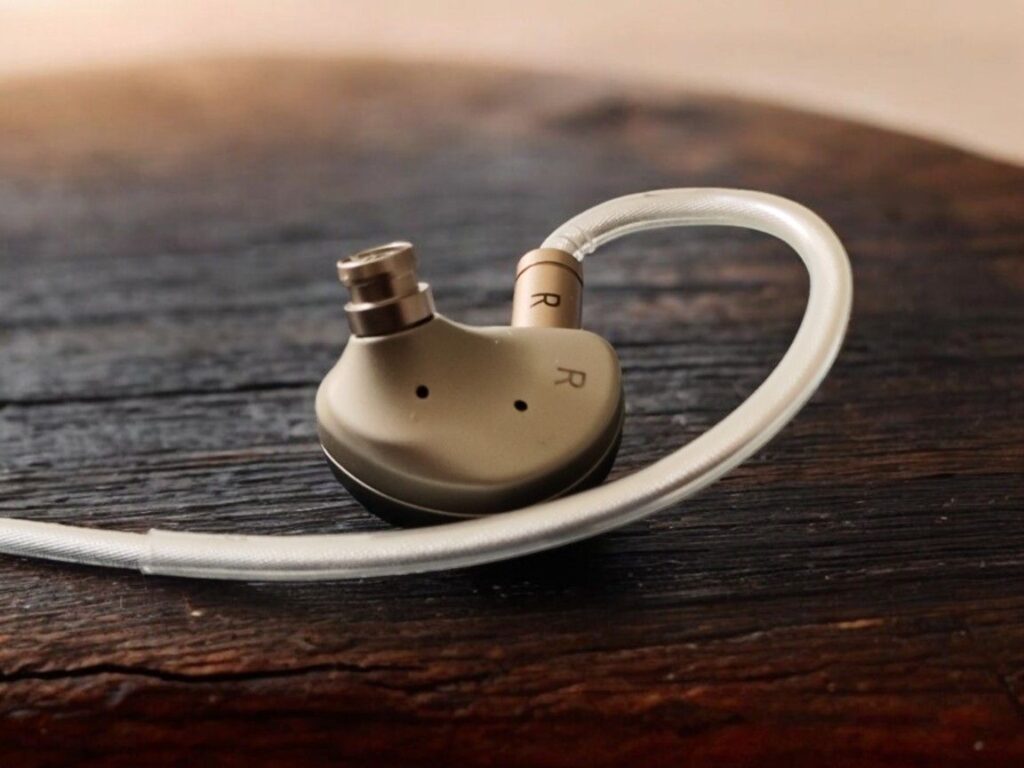
Image Copyright: The Headphoneer
The nozzles are non-detachable, and for some reason, Sivga has opted for an unconventional design that could pose compatibility issues with certain third-party. The nozzles feature a groove in the middle, whereas standard designs are typically either smooth cylindrical shapes or cylinders with a flange at the end.
The cable is remarkably good, especially at this price point, balancing a nice thickness with light weight. The details, like the Y-split, are very nicely crafted. The wires are silver-plated oxygen-free copper cable with Litz braiding. It’s got 0.78mm 2-pin connectors and a 3.5 mm jack termination.
There are two types of silicone tips supplied, each in three sizes. There’s also a nice brown leatherette storage case.
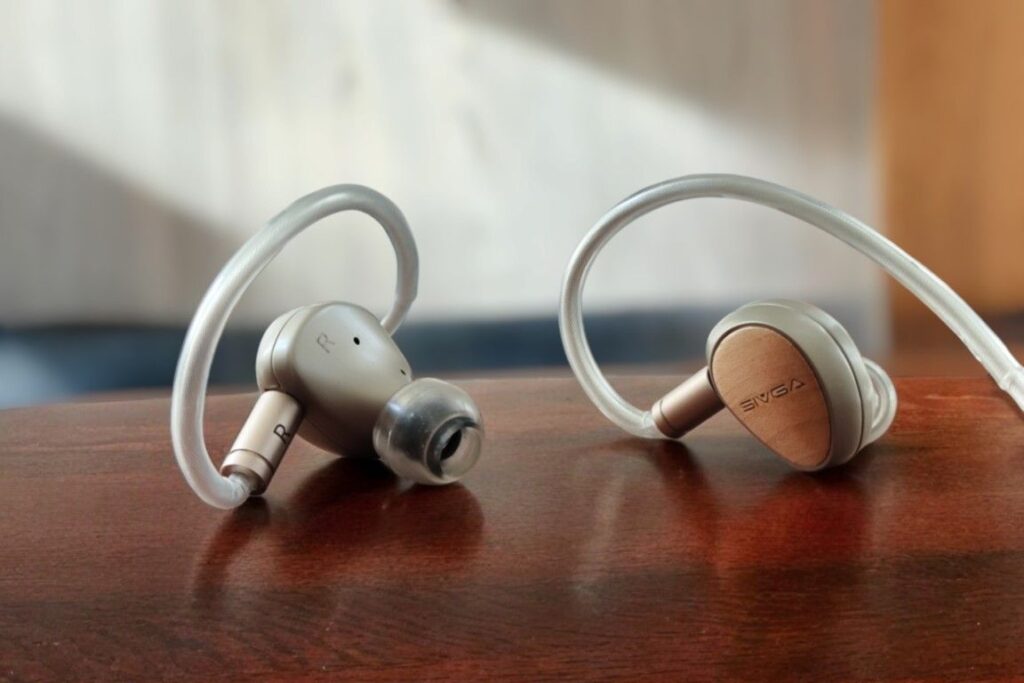
Image Copyright: The Headphoneer
LISTENING IMPRESSIONS
Associated equipment: Topping A90 amplifier with the RME ADI-2 DAC FS as source. I used the Azla SednaEarFit Crystal tips on the Que.
Crocus by Bertrand Renaudin
This piece consists of a melodic jazz guitar, quite energetic percussion, a clarinet, and a standing bass played with a bow. It sounds very spacious, warm, lush, and dynamic with the Que. It’s a great performance. There is lots of detail and texture, but in a very delicate way; it never gets too bright or harsh. The bass is well balanced.
Where Will I Be by Emmylou Harris
This album is a bit strange because everything sounds very spacious, except the vocals. They are recorded and presented in mono, which comes off as a bit weird on earphones that have good soundstage. This is very obvious with the Que. The electric guitars are very spacious-sounding and the bass drum is punchy and dynamic,
Alala by Azulejos
This delicate-sounding electronic track is wonderfully presented by the Que. The precision is spacious and snappy, and the bass is full and textured. It’s a warm and lush, yet spacious and detailed delivery.
Perth by Bon Iver
This is an interesting track; there are so many layers of sound. The Que delivers again. It’s got some great layering and depth capabilities. Also, when the track gets more busy, the Que handles the increasing complexity with ease, never getting busy or crowded-sounding, never too bright or fatiguing.
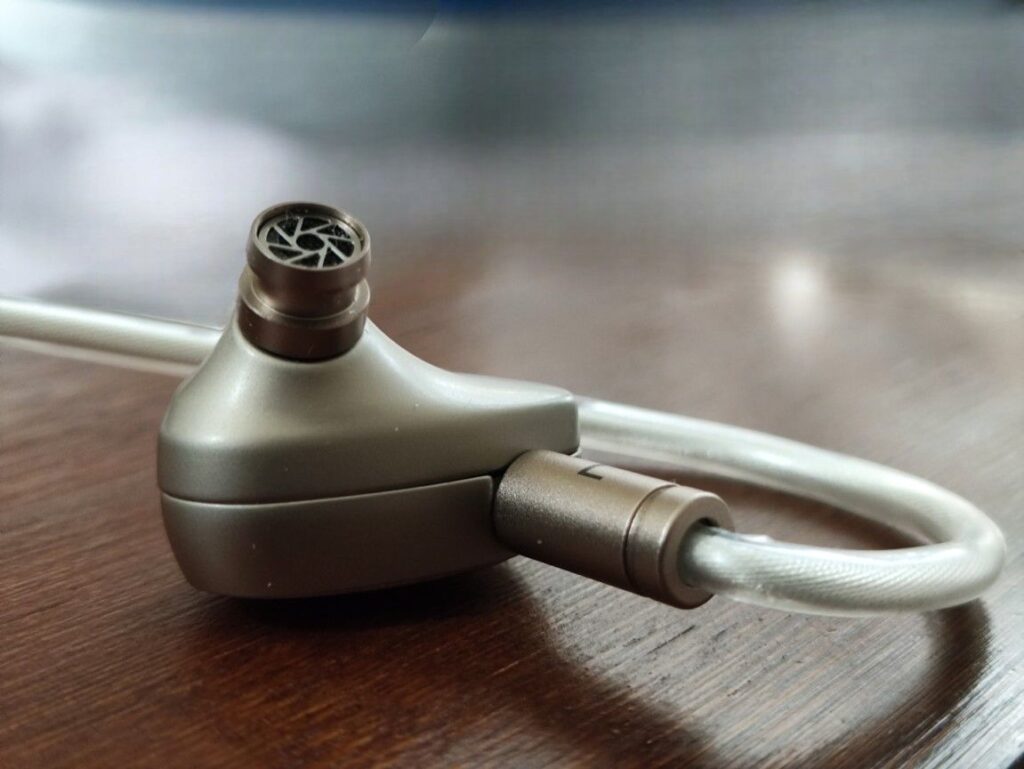
Image Copyright: The Headphoneer
Hawk by Brasstronaut
The bass here is quite strong, and the Que doesn’t hold back. Even though it has great definition and impressive texture, the sheer quantity is more than I prefer. It can, of course, be EQ-ed down. Everything else is very well defined and presented in the effortless and smooth, yet detailed way that seems to be typical for the Que.
Brothers in Arms by Dire Straits
Mark Knopfler’s vocals are warm, nuanced, and intimate. His electric guitar sounds terrific. The bass is rather strong, but not more than I can appreciate. All the ambient elements are delivered in a smooth and coherent-sounding way.
As Before by Olga Konkova
The cajôn drum is punchy and full-bodied. The piano is thick yet nuanced, and the female vocals are rich and textured.
Jambi by Tool
This metal track sounds great. That extra bass and rich midrange do this track well. The guitars and bass really sound full and thick yet detailed. The vocals are nicely separated. This track can often have some bothersome sibilance, but that’s not a problem with the Que.
Brahms’ Symphony No. 2 III by Paavo Järvi
The kettledrums are deep and full sounding. The strings are delicate and slightly warm. There’s nice separation and layering. I don’t feel that there is a lack of air even though the Que is slightly laid back in the upper registries.
Young Vivaldi Violin Concerto RV 820 III by Ensemble Modo Antiquo
The Que does a great job, with a slightly thick sound and rich timbre yet still with plenty of nuance and not any lack of space or presence.
COMPARISONS
Associated equipment: Topping A90 amplifier with the RME ADI-2 DAC FS as source. I used the Spinfit CP145 ear tips on all IEMs.
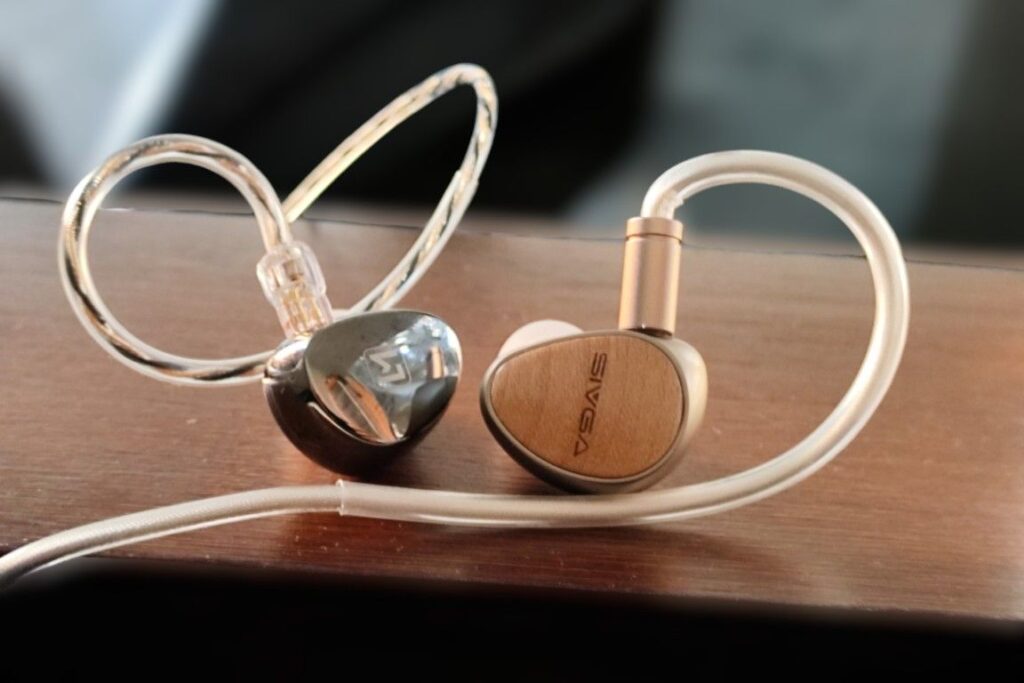
Image Copyright: The Headphoneer
SIMGOT EA500LM vs. SIVGA QUE
The $89 EA500LM is a single dynamic driver IEM that builds upon the tech used in the more expensive EA1000 and EA2000. It’s housing is all metal and it feels premium.
Compared to the EA500LM, the Que delivers deeper bass, fuller mids, and a softer treble. The EA500LM most notably brings more air and detail to the upper frequencies. When it comes to the midrange, the Que sounds warmer and richer, while the EA500LM is more reserved and slightly brittle. Both offer good midrange detail, but the Que’s sound is more rounded and fuller.
In terms of bass, both are strong performers with good presence, but the Que has a fuller, more robust, and textured presentation without sacrificing detail or dynamics. Overall, the Que is more dynamic and articulate, though it misses the finesse and high-end detail that the EA500LM excels at, particularly in the upper mids and treble.
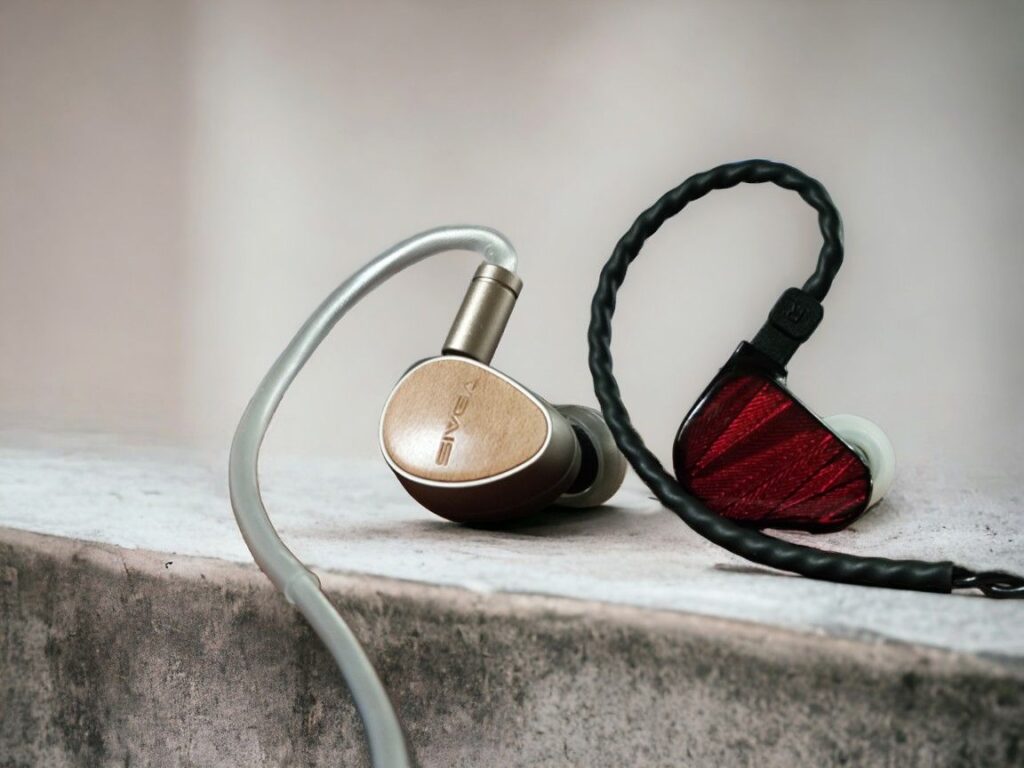
Image Copyright: The Headphoneer
TRUTHEAR X Crinacle Zero RED vs. SIVGA QUE
The $49 Zero RED is what I consider to be a pretty neutral-sounding IEM. In comparison to the Sivga Que, it comes off as slightly less pronounced in the bass, crisper mids, and brighter highs. Given that it has enough power (it is pretty demanding of the amplifier to sound its best), the Zero RED sounds very dynamic and spacious. The Que comes off as warmer, lusher, and generally fuller sounding. It’s delivery of detail and dynamics is more rounded and subtle, the soundstage more intimate.
The Zero RED is built of resin and is lighter but significantly larger. Sound aside, the Que has a much higher luxury factor: The IEMs looks better, the cable is in a completely different league, and you get a nice carrying case with it.
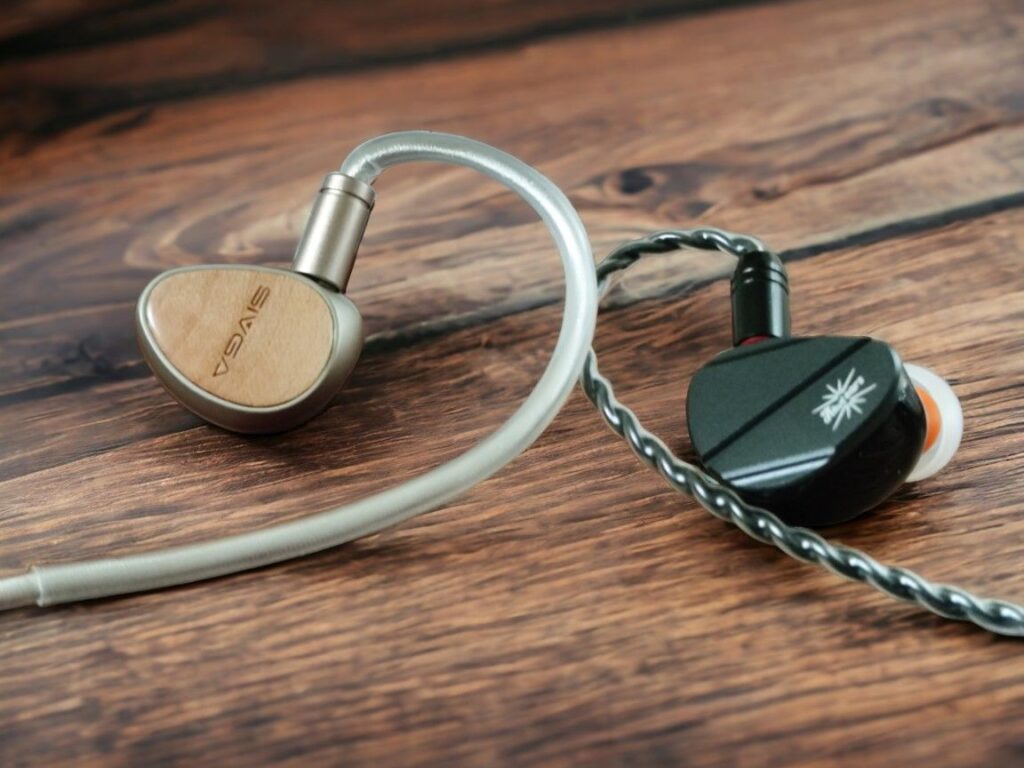
Image Copyright: The Headphoneer
KIWI EARS CANTA vs. SIVGA QUE
The $89 Canta is a new IEM from Kiwi Ears, featuring one dynamic driver and two planar magnetic drivers. Kiwi Ears markets it as having especially great midrange, which is also reflected in the name: The word “canta” means “singing” in Spanish.
The Canta and the Que have a lot in common. They are warm and lush, with a rich timbre. Comparing them, the Que has an even lusher midrange and more rounded treble, while the Canta offers more detail in the midrange and treble, a wider soundstage, and better imaging. The differences are not large, though.
As an all-rounder, the Canta might be the more logical choice, but my hand often reaches for the Que; it just has something about it.
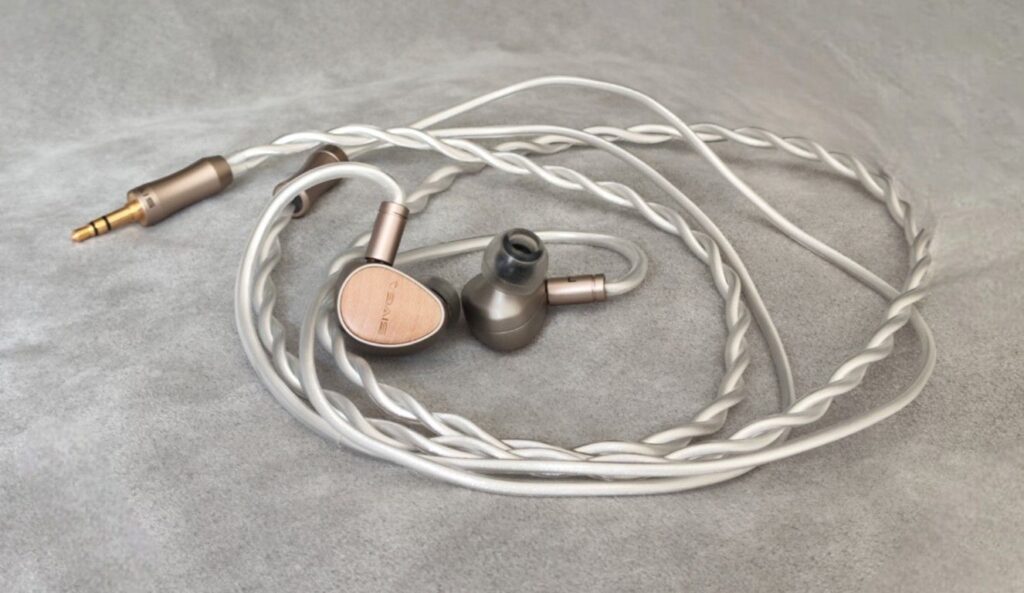
Image Copyright: The Headphoneer
WRAPPING IT UP
Sound Signature
The Sivga Que delivers a smooth listening experience. It features a warm, full-bodied sound signature, characterized by a lush midrange, rich bass, and relaxed treble.
Treble
The treble is smooth and rounded, providing a gentle presentation that avoids over-emphasizing detail. This results in a relaxed and non-fatiguing listening experience, making it exceptionally easy on the ears.
Midrange
The midrange is warm, thick, and lush, with a full-bodied, almost indulgent quality that’s as sweet as honey. It feels very present and captivating, yet remains nuanced, offering plenty of detail without the drier presentation typical of many detailed sounding IEMs at this price point.
Bass
The bass is rich and well-controlled, delivering body and depth without overwhelming the rest of the mix. It is warm yet still offers good detail and texture.
Soundstage and Imaging
The Que offers an intimate soundstage. It’s not as wide and open as many competitors, and its imaging capabilities are not class leading. However, this is part of its overall sound character. The Quote delivers a cohesive and engaging listening experience.
Detail, Dynamics, and Timbre
In terms of raw detail retrieval, the Que may not be the top performer in its class, but it certainly doesn’t feel lacking either: While it may not stand out in direct comparison to other IEMs, it still delivers a satisfying level of detail. Its dynamics are quite impressive, but the real highlight is its timbre; The Que has an addictively rich and engaging sound that keeps drawing me in.
AMPLIFICATION
All listening tests so far have been conducted using my desktop setup. However, most users will likely pair the Sigva Que with portable amps and sources.
With Quboz on my POCO F5 phone’s headphone output, it sounds really good. I could easily be happy with this setup for a vacation. It stays in the 40–50% volume range.
The Jade/FiiO JA11 sounds better, the xDuoo Link2 Bal sounds, THX Onyx, and the Dragonfly Cobalt even more, quite close to my desktop rig. The $89 Letshuoer DT03, might be the best considering the price/performance ratio.
In conclusion, it seems like the Sivga Que is very easy to drive and not at all picky on the amplifier.
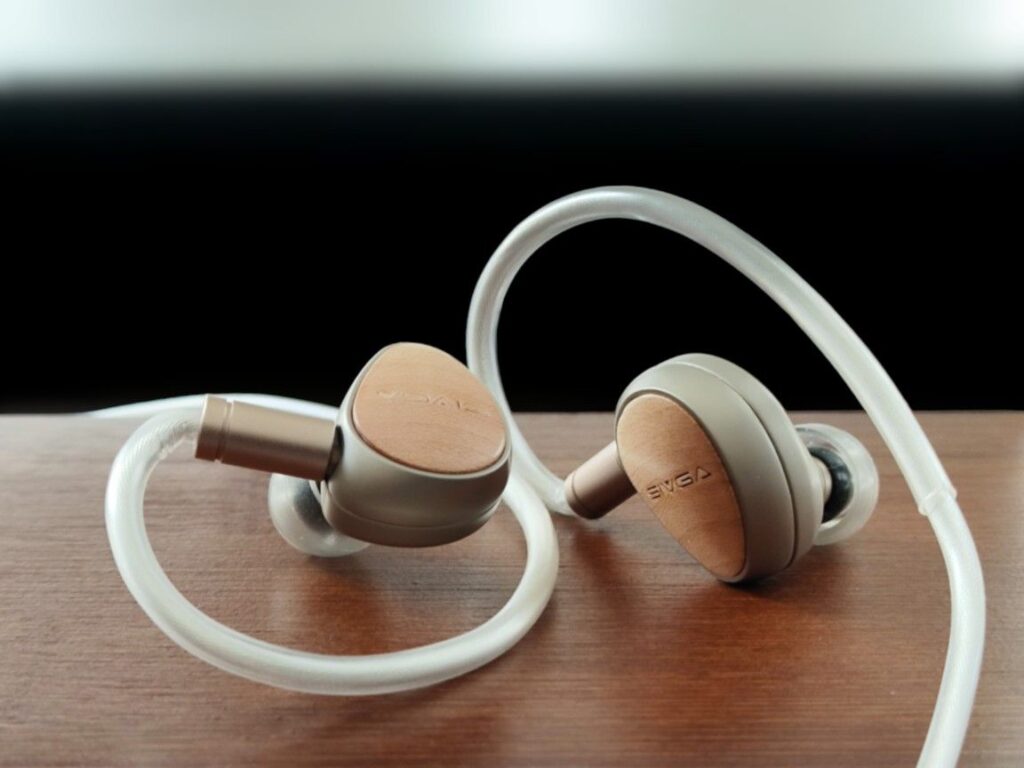
Image Copyright: The Headphoneer
CONCLUSION
The Sivga Que delivers a warm, full-bodied sound, striking a satisfying balance between lushness, dynamics and detail. It maintains a smooth and well-balanced presentation without harshness or booming bass.
Its excellent build quality, paired with a high-quality cable, makes it a premium feeling product, far exceeding its price point. The Que is also very easy to drive and pairs well with a range of different amplifiers and sources.
Some may prefer a sharper cut sound signature, but if you’re seeking a lush, smooth listening experience that retains both detail and dynamics, the Sivga Que could be exactly what you’re looking for.
Thanks for reading. You can support us by purchasing anything from any of our affiliate links:
Any purchase you make on Amazon or Linsoul with any of our affiliate links will give us a small provision at no cost to you.
We only get a provision for items that are not returned, so there’s no incentive for us to recommend something that’s not good.
Linsoul : Headphones, Earbuds, Wireless Earbuds, Desktop DAC/AMP, Portable DAC/AMP, Digital Audio Players,
Amazon: Headphones, IEMs, Headphone Amplifiers, Home Audio or Anything else.
.
If you enjoyed this article or other content on The Headphoneer, you might consider leaving a small donation to keep this website up and running. No donation is too small. Thanks for supporting us!
If you like our work please follow us on Instagram, Facebook and Twitter , it will help us grow. Sharing is caring 🙂


